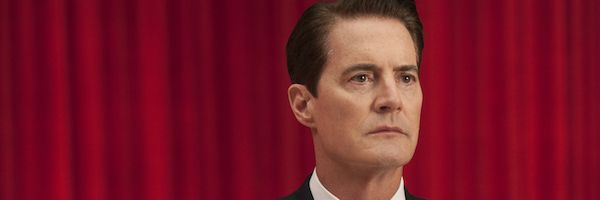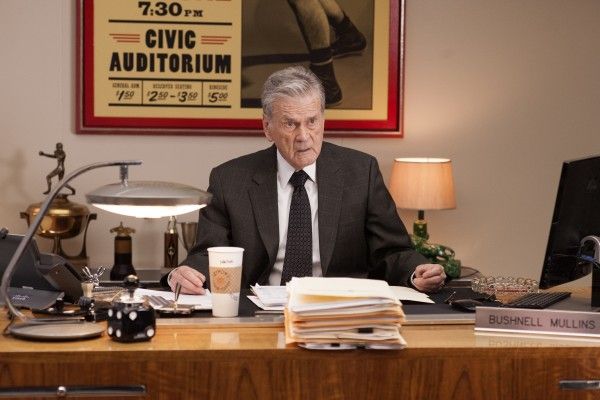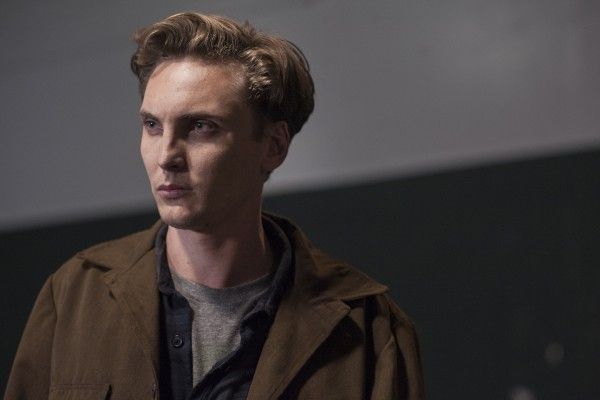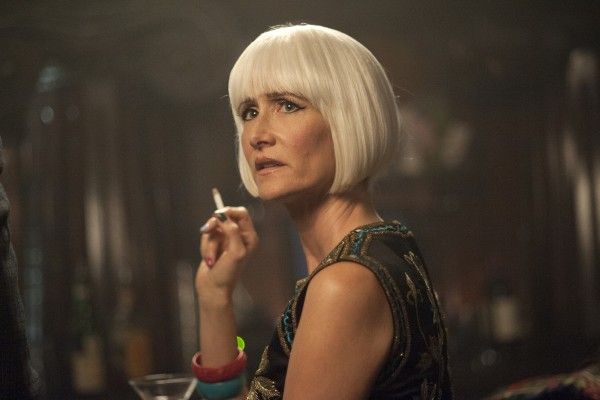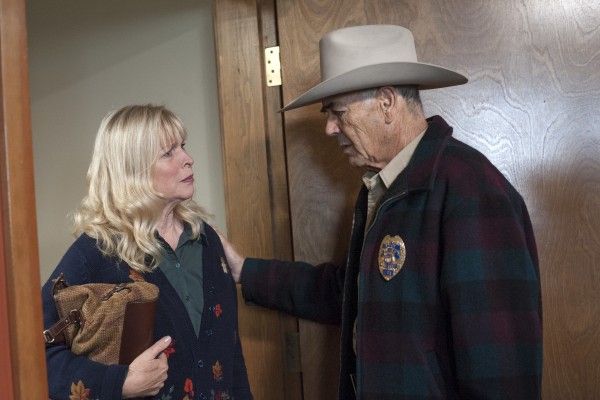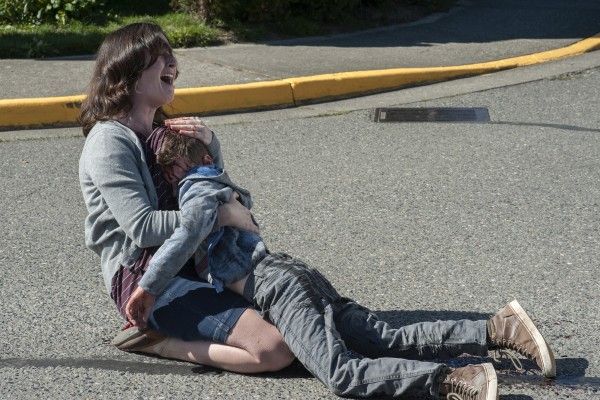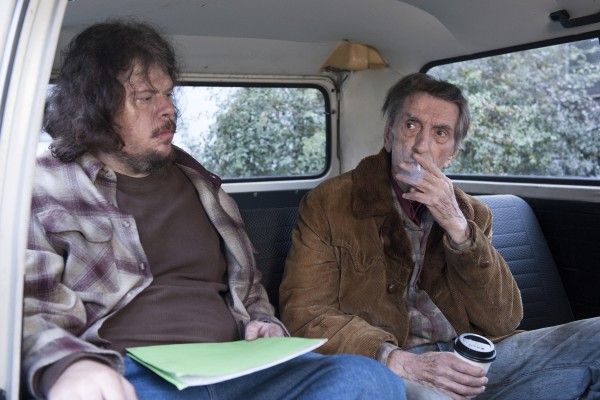"Part 6" of Twin Peaks: The Return (or whatever we're calling it) ends on a moment of high intrigue. Well, it's not the real, real end with Sharon Van Etten and her band, but a few scenes before that. Hawk finally locates a clue in his task of decoding what the Log Lady said to him and, by extension, his place in finding Agent Dale Cooper. And in typical David Lynch form, he showed no hurry in letting us know what Hawk will find in those pages found wedged between the metal plates of a bathroom stall door.
You could categorize that as a kind of cliffhanger but I've long given up prizing any storyline with narrative importance, considering the ever-hungry sprawl and wayward intricacy of Lynch's world. Tonight's episode opened with Cooper as Dougie, still trying to replicate the image of a lawman, one that he takes from a cowboy statue outside Lucky 7 Insurance. Does Cooper remember being a lawman or is he just attempting to replicate what he sees as a masculine figure? His budding interest in the shiny badge worn by the security officer who brings him home suggests that there are memories of his entire get-up just out of reach in his mind.
It's interesting that in becoming Dougie, he goes from representing clean-cut, all-business masculinity to another familiar male type, the degenerate father with a gambling problem and a taste for prostitutes. In the guise of Dougie, he nevertheless must face the rage of Naomi Watts' Janey-E, Dougie's wife, when pictures of Dougie and Jade show up alongside a phone call from another loan shark, most prominently personified by Jeremy Davies, demanding $50,000. Cooper also seemed to be glomming onto the poster of Bushnell Mullins (Don Murray), his elderly boss in his youthful days as a boxer, suggesting that he is also attempting to hang onto a past part of his identity.
The whole sequence in the office between Cooper as Dougie and Mullins is bewitching for a few reasons. Murray communicates a transition between two very different emotions with little more than a few grumbles and a few irritated utterances, moving from confusion, annoyance, and anger to genuine intrigue and thankfulness. It's also a beautiful encapsulation of how Lynch seems to present his art, sans explanation but confident in its substance. When Cooper tells Mullins to "make sense of it," you can almost hear Lynch cackling underneath the line. And if this whole Kyle MacLachlan holding coffee like a fixated toddler thing never ends, I'll be happy.
Anyway, back to Twin Peaks, where some serious shit went down. We had only gleaned Balthazar Getty's villain from afar in the final moments of the first two episodes, but now he seems to be a major fixture in what's going on in the titular town. In an immediately iconic sequence, he sizes up Eamon Farren's aggressive punk with a dime trick, even though he has a bodyguard with a gun the size of a bike behind him. There's always been this tendency in Lynch work to make criminals look crazy, focused, and generally pretty bratty. He makes a point of confirming their danger but never giving them any real respect, even if they have serious, unfulfilled desires or hurt feelings. In other words, crime is never controlled or even particularly that cool in Lynch view, and one can feel that balance between the unpredictable and the shallow in Getty's performance.
That was also true of Farren's character, who responds to his hit-and-run of a young boy with a mix of reassurance that he told the kid to get out of the way and the creeping knowledge that that will never matter to the police. He attempts to hide the crime with a quick clean-up but it seems inevitable that his violent spree will at least touch Miriam (Sarah Jean Long), the teacher who found two pieces of pie with her name on them at the RR. There's a continuing interest in the random things that people seem to follow and allow to dictate their actions, whether it be Miriam seeing her name on pastries and other objects or Cooper creating elusive pencil drawings on insurance documents because of small bright specks in his vision. In doing so, the director reinforces his belief in following your own impulses as an artist but doesn't discount how ridiculous these impulses look or sound, at least at first blush.
Overall, this was one of the most active episodes, although Lynch has long ago mastered the art of making the mundane look either meaningful or mad. What was one to make of the appearance of Laura Dern as Cooper's long-fabled secretary Diane Evans, to whom the agent was dictating to when he first drove into Twin Peaks? Lynch is investigating the forever-teeming mythology of his canonical series but he's doing so in ways that question memory and nostalgia, and builds his doubts into the narrative itself at this point. One could see it in the way the late Miguel Ferrer, as Albert, curses the burden of rain as being fantastically represented by Gene Kelly, or when Getty's villain warps a memory of The King and I for malevolence. All is not how you remembered it after all, and with a feral ice-pick killer on the loose, massacring whole office suites and hunting for Dougie, it's hard to keep track of what's in the present as well.
Rating: ★★★★★

